How to Incorporate Sustainable Gardening into City Life?
In today's fast-paced urban environments, where concrete jungles dominate the landscape, the idea of sustainable gardening may seem like a distant dream. However, it's not only possible but also incredibly rewarding! Imagine stepping out of your apartment and into a vibrant green space filled with the sights and sounds of nature. Sustainable gardening is all about creating these green oases right in the heart of the city. By integrating eco-friendly practices, city dwellers can transform their living spaces into flourishing gardens that not only beautify their surroundings but also contribute positively to the environment.
So, how do you get started? First, it's essential to understand that sustainable gardening focuses on practices that support biodiversity, conserve resources, and promote healthy ecosystems. This means choosing the right plants, maximizing limited space, and implementing techniques that reduce waste and conserve water. Whether you have a tiny balcony or a shared community garden, there are countless ways to cultivate your green thumb!
One of the most exciting aspects of sustainable gardening is its adaptability. Urban gardeners can use vertical gardening techniques to grow plants upwards, making the most of limited space. Imagine a wall of lush greenery that not only looks stunning but also provides fresh herbs and vegetables for your kitchen. Container gardening is another fantastic option, allowing you to create beautiful plant arrangements in pots that can be placed anywhere, from windowsills to rooftops.
Another critical component of sustainable gardening is composting. Did you know that a significant amount of waste produced in cities can be composted? By composting food scraps and yard waste, you can enrich your soil while reducing landfill contributions. Even if you're living in a small apartment, options like vermicomposting or bokashi can fit seamlessly into your lifestyle.
Engaging with local resources is also vital. Many cities offer community gardening initiatives where residents can come together to grow food and share knowledge. These community gardens not only provide fresh produce but also foster social connections and a sense of belonging among neighbors. If you’re interested in starting a community garden, it’s all about collaboration and planning—gather your neighbors, find a suitable plot of land, and start brainstorming!
Finally, let's not forget about water conservation. Urban gardening can thrive even in water-scarce environments. Techniques like rainwater harvesting and drip irrigation systems can significantly reduce water usage while keeping your plants healthy and hydrated. Imagine being able to water your garden using rainwater collected from your roof—how cool is that?
In conclusion, incorporating sustainable gardening into city life is not only feasible but also incredibly rewarding. By embracing eco-friendly practices, selecting the right plants, and engaging with local resources, you can create a thriving green space that benefits both you and the environment. So, roll up your sleeves, grab your gardening tools, and let’s get growing!
- What are the best plants for urban gardening? Native and drought-resistant plants are ideal choices as they require less water and maintenance.
- Can I garden in a small apartment? Absolutely! Container gardening and vertical gardening are perfect solutions for small spaces.
- How can I start composting in the city? You can start with methods like vermicomposting or bokashi, which are suitable for small spaces.
- What are community gardens? Community gardens are shared spaces where residents can grow food together, fostering collaboration and connection.
- How can I conserve water while gardening? Techniques like rainwater harvesting and drip irrigation are effective methods for conserving water in urban gardens.

Understanding Sustainable Gardening
Sustainable gardening is more than just a trend; it’s a way of life that resonates deeply within urban environments. In a world where concrete jungles often overshadow the beauty of nature, sustainable gardening emerges as a beacon of hope. It focuses on environmentally friendly practices that not only support biodiversity but also conserve precious resources and promote healthy ecosystems. Imagine transforming your small balcony or backyard into a thriving oasis that benefits both you and the planet.
At its core, sustainable gardening embraces a holistic approach. It encourages gardeners to consider the entire ecosystem, from soil health to water conservation. This means using organic fertilizers, composting kitchen scraps, and avoiding harmful pesticides that can disrupt local wildlife. The principles of sustainable gardening are grounded in the idea that every action has a reaction. By nurturing your garden sustainably, you’re not just growing plants; you’re fostering a vibrant habitat for birds, bees, and beneficial insects.
In urban settings, where space is limited and pollution levels are high, the importance of sustainable gardening cannot be overstated. It helps mitigate the urban heat island effect, improves air quality, and provides fresh produce right at your doorstep. Think about it: instead of relying on store-bought vegetables that have traveled miles to reach you, why not grow your own? This not only reduces your carbon footprint but also ensures that your food is free from harmful chemicals.
Moreover, sustainable gardening promotes community engagement. When city dwellers come together to share resources, knowledge, and even seeds, they create a sense of belonging and purpose. Community gardens sprout up in vacant lots, transforming neglected spaces into lush green havens. These communal efforts not only beautify the neighborhood but also strengthen social ties among residents. It’s a win-win situation!
To sum it up, understanding sustainable gardening is essential for anyone looking to make a positive impact in their urban environment. By adopting these practices, you are taking a step towards creating a healthier planet for future generations. So, why not dig in and start your sustainable gardening journey today? Your plants, your community, and the Earth will thank you!
- What is sustainable gardening? Sustainable gardening is a method of gardening that focuses on environmentally friendly practices that support biodiversity and conserve resources.
- Why is sustainable gardening important in urban areas? It helps improve air quality, reduces the urban heat island effect, and provides fresh produce while fostering community engagement.
- How can I start a sustainable garden in a small space? You can utilize vertical gardening, container gardening, and select native or drought-resistant plants to maximize your limited space.

Choosing the Right Plants
When it comes to sustainable gardening in urban areas, one of the most critical decisions you'll make is . Selecting plants that are well-suited to your local climate and soil conditions can significantly increase your chances of success while minimizing the need for excessive watering, fertilizers, and pesticides. This not only saves you time and money but also contributes to a healthier ecosystem. So, how do you find the perfect plants for your urban garden? Let’s dive into some essential strategies!
First and foremost, consider native plants. These are species that have evolved in your region and are adapted to the local climate, soil, and wildlife. By incorporating native plants into your garden, you’re not only supporting local biodiversity but also creating a habitat for pollinators and other beneficial insects. Native plants generally require less maintenance, as they are more resistant to local pests and diseases. For example, if you live in a region with dry summers, you might choose plants like California poppy or purple sage, which thrive in such conditions.
In addition to native plants, consider drought-resistant plants. These plants are specifically adapted to survive with minimal water, making them ideal for urban gardens where water conservation is essential. For instance, succulents and certain ornamental grasses can add beauty to your space without demanding regular watering. By selecting these resilient species, you can create a lush garden that flourishes even in dry spells.
To help you visualize your options, here’s a quick table showcasing some native and drought-resistant plants suitable for urban gardening:
| Plant Name | Type | Water Needs | Benefits |
|---|---|---|---|
| California Poppy | Native | Low | Attracts pollinators |
| Purple Sage | Native | Low | Supports local wildlife |
| Aloe Vera | Drought-resistant | Very Low | Medicinal properties |
| Blue Fescue | Drought-resistant | Low | Ornamental grass |
Another critical aspect of choosing the right plants is understanding their growth conditions. Factors such as sunlight, soil type, and space availability play a significant role in plant health. Take the time to observe your garden space: Is it sunny all day, or does it experience shade? Do you have rich, loamy soil, or is it sandy and dry? Answering these questions will help you make informed decisions about which plants will thrive in your unique environment.
Moreover, don't forget to think about seasonal changes. A well-planned garden will have plants that bloom at different times throughout the year, providing color and interest across all seasons. Mixing perennials and annuals can create a dynamic landscape that evolves over time. Imagine walking through your garden in spring, surrounded by vibrant flowers, and then returning in fall to see the stunning foliage of your perennials. This seasonal diversity not only enhances aesthetics but also supports wildlife throughout the year.
Finally, engaging with local gardening groups or online communities can provide invaluable insights into what plants work best in your area. Sharing experiences and tips with fellow urban gardeners can lead to fantastic discoveries and help you avoid common pitfalls. Remember, sustainable gardening is not just about the plants you choose; it’s about creating a thriving ecosystem that benefits everyone, including you!

Native Plants Benefits
Native plants play a crucial role in maintaining the ecological balance within urban environments. They are species that have naturally adapted to the local climate and soil conditions over time, making them inherently resilient and well-suited for city gardening. One of the most significant advantages of using native plants is their ability to support local wildlife. By providing food and habitat for birds, butterflies, and beneficial insects, native plants contribute to a thriving ecosystem right in your backyard.
Another key benefit is water conservation. Native plants typically require less water than non-native species, as they are already adapted to the local rainfall patterns. This not only saves you time and resources but also reduces your environmental footprint. Imagine transforming your garden into a lush oasis that thrives on the natural rainfall, rather than relying on excessive watering. It’s like having a self-sustaining ecosystem right outside your window!
Moreover, native plants are generally low-maintenance. They don’t need fertilizers or pesticides as often as non-natives, which can be a game-changer for busy urban dwellers. Consider this: instead of spending your weekends fussing over your garden, you could be enjoying it with friends and family. The less you have to worry about maintenance, the more you can appreciate the beauty and tranquility that a garden provides.
Here are some additional benefits of incorporating native plants into your urban garden:
- Enhanced Biodiversity: Native plants support a variety of local species, contributing to a more diverse ecosystem.
- Soil Health: Their deep root systems help improve soil structure and prevent erosion.
- Cultural Significance: Many native plants have historical and cultural importance, connecting you to the heritage of your region.
In summary, embracing native plants in your urban gardening endeavors not only enhances the beauty of your surroundings but also fosters a sustainable environment. By choosing the right native species, you can create a vibrant, self-sustaining garden that benefits both you and the local ecosystem.
Q1: What are native plants?
Native plants are species that naturally occur in a specific region without human introduction. They have adapted to the local climate, soil, and wildlife.
Q2: Why should I choose native plants for my garden?
Native plants require less maintenance, conserve water, support local wildlife, and are generally more resilient to local pests and diseases.
Q3: How can I find native plants suitable for my area?
You can check with local nurseries, botanical gardens, or native plant societies for lists of species that thrive in your region.
Q4: Do native plants attract pests?
While native plants do attract some pests, they also attract beneficial insects that help control pest populations naturally.
Q5: Can I mix native plants with non-native plants?
Yes, you can create a diverse garden by mixing native and non-native plants. However, ensure that non-native species are non-invasive and won't disrupt local ecosystems.
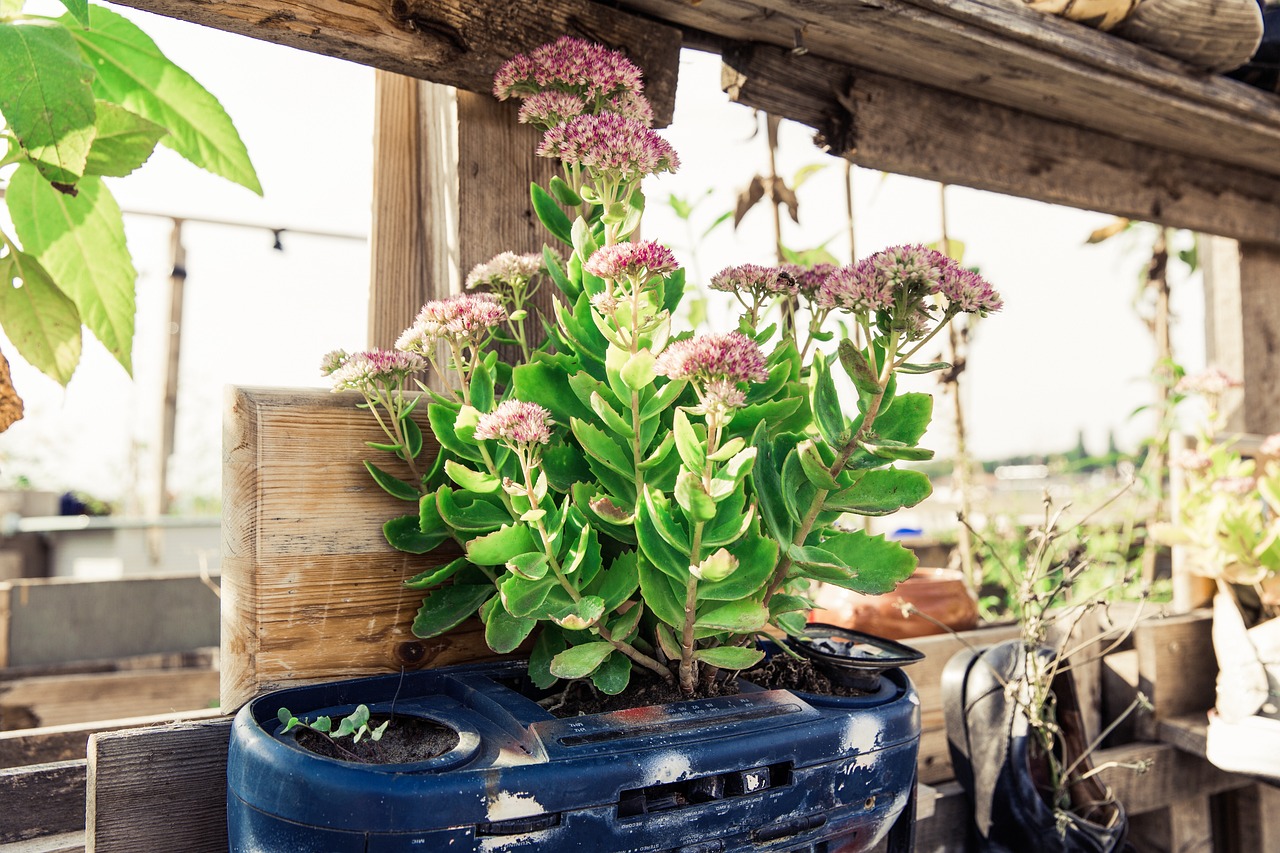
Examples of Native Plants
When it comes to sustainable gardening in urban areas, incorporating native plants is a game-changer. These plants are not just beautiful; they are perfectly adapted to the local climate and soil conditions, meaning they require less water and maintenance than non-native species. This makes them an excellent choice for city dwellers looking to create a thriving green space without the hassle of constant upkeep.
Native plants also play a crucial role in supporting local ecosystems. They provide food and habitat for various wildlife, including birds, butterflies, and beneficial insects. Imagine stepping into your garden and being greeted by the cheerful buzz of bees and the flutter of butterflies—this is what native plants can bring to your urban oasis!
Here are some examples of native plants that thrive in different urban climates:
- Purple Coneflower (Echinacea purpurea) - A stunning perennial that attracts pollinators and is drought-tolerant.
- Black-eyed Susan (Rudbeckia hirta) - Bright yellow flowers that bloom in late summer, perfect for adding a splash of color.
- Wild Bergamot (Monarda fistulosa) - A fragrant herb that attracts bees and butterflies, ideal for a sensory garden.
- Eastern Redbud (Cercis canadensis) - A small tree with beautiful pink flowers in spring, providing shade and habitat.
- Switchgrass (Panicum virgatum) - A hardy grass that adds texture and is excellent for erosion control.
Each of these native plants not only enhances the beauty of your garden but also contributes to the overall health of the urban ecosystem. By choosing plants that are well-suited to your specific region, you can create a garden that flourishes with minimal intervention. Plus, you’ll be doing your part to support local wildlife and biodiversity.
Incorporating native plants into your garden is like inviting your local environment to join you. It’s a way to celebrate the natural beauty of your area while creating a sustainable space that benefits both you and the planet. So, whether you have a balcony, a small yard, or a community garden plot, consider adding these native gems to your gardening repertoire!
Q1: Why should I choose native plants for my urban garden?
A1: Native plants are adapted to local conditions, requiring less water and maintenance. They also support local wildlife and biodiversity, making your garden more ecologically friendly.
Q2: How do I find native plants suitable for my area?
A2: You can check with local nurseries, gardening clubs, or online resources dedicated to native plants in your region. Many organizations provide lists of plants that thrive in specific climates.
Q3: Can I mix native plants with non-native plants?
A3: Yes, you can mix native and non-native plants, but it’s essential to ensure that the non-native species are not invasive and do not outcompete the native ones.
Q4: How can I maintain native plants in my garden?
A4: Native plants typically require less maintenance than non-natives. Regular watering during dry spells, occasional pruning, and mulching are usually sufficient to keep them healthy.

Creating Pollinator Gardens
Creating a pollinator garden is not just a trendy gardening technique; it's a vital step towards supporting our planet's biodiversity. Imagine transforming your urban space into a vibrant oasis buzzing with life, where butterflies flutter and bees buzz busily from flower to flower. By incorporating a variety of flowering plants, you can create a sanctuary for these essential creatures, helping them thrive even in the hustle and bustle of city life.
To start, it’s important to understand what makes a garden truly inviting for pollinators. Pollinators are attracted to specific colors, scents, and shapes of flowers. For instance, bright colors like yellow, purple, and blue tend to catch their attention. Additionally, opting for plants with a variety of bloom times ensures that there is always something flowering throughout the growing season, providing a continuous food source. Consider including plants that bloom in spring, summer, and fall to keep the pollinators happy year-round.
Another crucial aspect is the choice of plants. Native plants are particularly effective in attracting local pollinators because they have co-evolved with these species. They are often better adapted to the local climate and soil conditions, requiring less maintenance and water than non-native varieties. Here are a few examples of excellent native plants that you might consider:
| Plant Name | Bloom Time | Pollinators Attracted |
|---|---|---|
| Black-eyed Susan | Summer | Bees, Butterflies |
| Milkweed | Summer | Monarch Butterflies |
| Bee Balm | Summer | Bees, Hummingbirds |
| Goldenrod | Fall | Bees, Butterflies |
In addition to selecting the right plants, it’s also essential to create an environment that encourages pollinators to visit and stay. This can be achieved by providing shelter and water sources. Small brush piles or patches of undisturbed soil can serve as nesting sites for solitary bees. Meanwhile, a shallow dish of water with pebbles or marbles can offer a safe drinking spot for thirsty pollinators.
Moreover, avoid using pesticides or herbicides in your pollinator garden. These chemicals can be harmful not only to the targeted pests but also to the beneficial insects you want to attract. Instead, consider organic pest control methods that are safe for both plants and pollinators.
Finally, don’t forget to educate your neighbors and community about the importance of pollinator gardens. By sharing your knowledge and experiences, you can inspire others to join the movement for a greener, more sustainable urban environment. Imagine the impact of a neighborhood filled with pollinator-friendly gardens, creating a network of habitats that supports our buzzing friends!
In summary, creating a pollinator garden in your urban space is an exciting and rewarding endeavor. By carefully selecting native plants, providing shelter and water, and avoiding harmful chemicals, you can cultivate a thriving ecosystem that not only beautifies your surroundings but also plays a crucial role in supporting pollinator populations.
- What are the best plants for a pollinator garden? Native flowering plants such as Black-eyed Susans, Milkweed, and Bee Balm are excellent choices.
- How can I attract more pollinators to my garden? Use a variety of colors and shapes of flowers, provide water sources, and avoid pesticides.
- Is it necessary to have a large space for a pollinator garden? No, even small balconies or window boxes can be converted into pollinator-friendly spaces.

Drought-Resistant Plants
Drought-resistant plants are a game changer for urban gardeners looking to conserve water while still creating a vibrant green space. These hardy species are adapted to thrive in conditions where water is limited, making them perfect for city environments where water conservation is essential. By choosing drought-resistant plants, not only do you reduce your water usage, but you also contribute to a more sustainable ecosystem.
When selecting drought-resistant plants, it’s important to understand their unique characteristics. These plants have developed various adaptations, such as deep root systems, waxy leaves, or the ability to store water, allowing them to survive prolonged dry spells. Some common examples include succulents, lavender, and ornamental grasses. Incorporating these plants into your garden can create a stunning landscape that requires minimal maintenance, which is ideal for busy city dwellers.
Moreover, drought-resistant plants often attract pollinators and other beneficial wildlife, enhancing the biodiversity of your urban garden. By creating a habitat that supports local fauna, you’re not just beautifying your space; you’re also playing a crucial role in maintaining ecological balance. Imagine walking through your neighborhood and seeing vibrant flowers that not only look beautiful but also buzz with the activity of bees and butterflies. It’s a win-win situation!
To help you get started, here’s a quick table comparing some popular drought-resistant plants, highlighting their specific needs and benefits:
| Plant Name | Water Needs | Sun Exposure | Benefits |
|---|---|---|---|
| Lavender | Low | Full Sun | Attracts pollinators, fragrant |
| Sedum | Very Low | Full Sun to Partial Shade | Ground cover, drought-tolerant |
| Agave | Very Low | Full Sun | Architectural interest, low maintenance |
| Ornamental Grasses | Low | Full Sun | Movement in the garden, texture |
Incorporating these plants into your garden not only enhances its aesthetic appeal but also aligns with sustainable gardening practices. As you plan your urban garden, consider how these drought-resistant plants can help you create a lush, beautiful environment that thrives with minimal water. Plus, you'll have the satisfaction of knowing you're doing your part to conserve precious resources.
As you embark on this journey, remember that every little bit counts. By choosing drought-resistant plants, you're not just making a choice for your garden; you're making a statement about your commitment to sustainability and environmental stewardship. So, why not take that leap and transform your urban space into a thriving oasis?
- What are drought-resistant plants? Drought-resistant plants are species that can survive with minimal water, making them ideal for areas with limited rainfall.
- How do I care for drought-resistant plants? These plants typically require less frequent watering and prefer well-drained soil. It's important to research specific needs for each type.
- Can I grow drought-resistant plants in containers? Absolutely! Many drought-resistant plants thrive in containers, provided they have adequate drainage and the right soil mix.
- Are drought-resistant plants beneficial for the environment? Yes! They help conserve water, reduce runoff, and provide habitats for local wildlife.
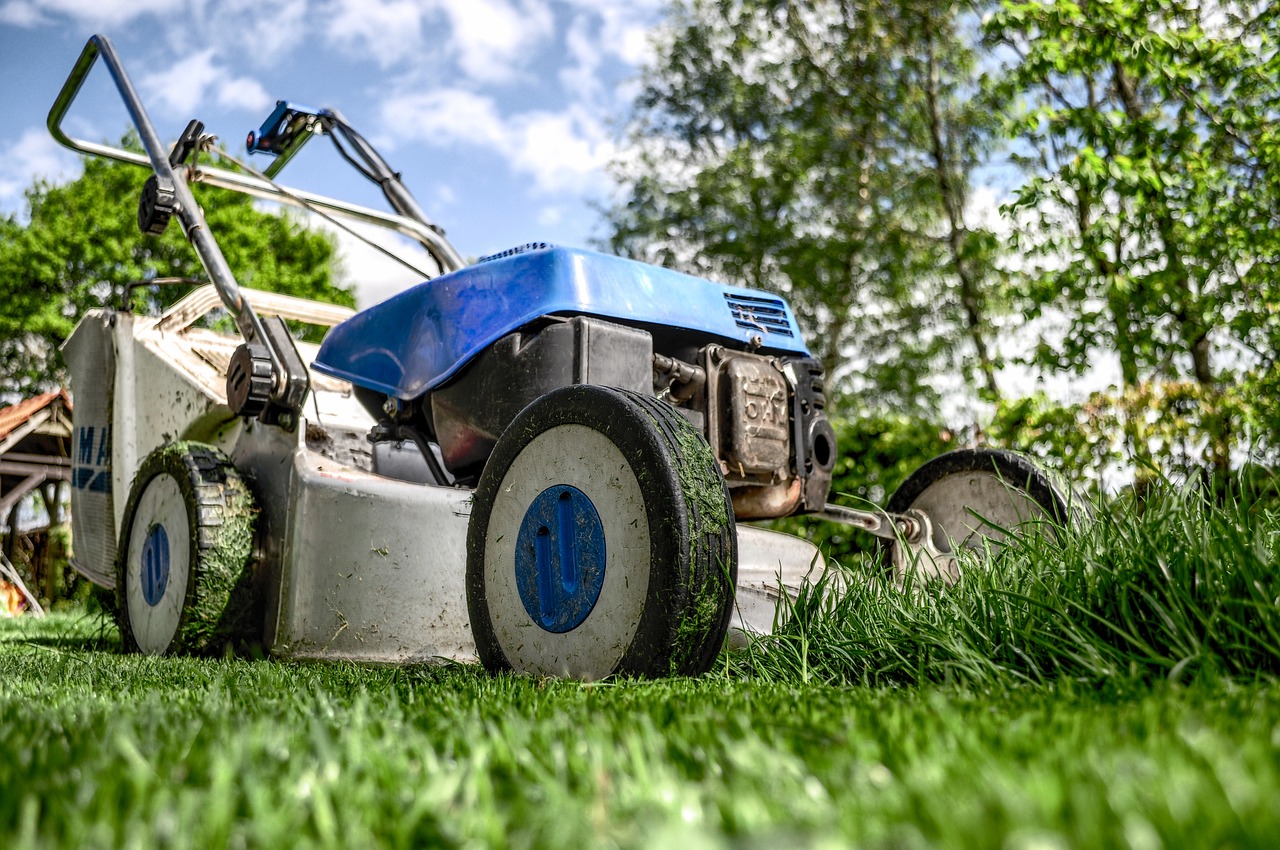
Maximizing Small Spaces
Living in the city often means limited space for gardening, but that doesn’t mean you have to sacrifice your green thumb! In fact, with a little creativity, you can transform even the tiniest balcony or patio into a flourishing garden. Think of your small space as a blank canvas, where every inch counts. By employing innovative gardening techniques, you can maximize your urban garden's potential and create a lush oasis right outside your door.
One of the most effective ways to utilize small areas is through vertical gardening. This technique allows you to grow plants upwards rather than outwards, making it perfect for cramped spaces. Imagine a wall adorned with vibrant flowers or fresh herbs cascading down. You can achieve this by using trellises, wall-mounted planters, or even repurposed materials like old pallets. Vertical gardens not only save space but also add a stunning visual element to your home.
Another great option is container gardening. This method involves planting in pots, which can be arranged in various configurations to fit your available space. You can mix and match different sizes and shapes of containers to create an eye-catching display. Choose lightweight materials for easy maneuverability, and consider using self-watering containers to reduce maintenance. The versatility of container gardening means you can move your plants around to capture the best sunlight or even bring them indoors during harsh weather.
When selecting plants for your small urban garden, consider choosing companion plants that thrive together. For example, you can plant tomatoes alongside basil, which not only saves space but also enhances the flavors of both plants. Additionally, opting for herbs and leafy greens can be a smart choice since they can be harvested continuously, providing fresh ingredients for your kitchen throughout the season. You might be surprised at how much you can grow in just a few pots!
To make the most of your limited space, think about incorporating hanging gardens. Hanging planters can be suspended from ceilings, railings, or walls, allowing you to create a garden that doesn’t take up any ground space. Plants like strawberries, trailing vines, and even some vegetables can thrive in hanging containers, adding a unique touch to your urban environment.
Additionally, consider using stackable planters or tiered plant stands to create a multi-level garden. This not only maximizes vertical space but also creates a visually appealing arrangement that draws the eye upward. You can fill each level with different types of plants, ensuring that you have a diverse and vibrant garden.
In summary, maximizing small spaces for gardening is all about creativity and resourcefulness. By using vertical gardening, container gardening, companion planting, and incorporating hanging gardens and stackable planters, you can create a thriving green space in your urban environment. So, roll up your sleeves and get ready to transform your small area into a beautiful sanctuary of nature!
- What are the best plants for small spaces? Consider herbs, leafy greens, and compact vegetables that can thrive in containers.
- How can I ensure my vertical garden gets enough sunlight? Position your vertical garden in a spot that receives at least 6 hours of sunlight daily or use grow lights if indoors.
- Can I grow vegetables in containers? Yes, many vegetables like tomatoes, peppers, and lettuce can thrive in containers with proper care.
- What is the easiest way to start a container garden? Start with a few pots, quality potting soil, and choose easy-to-grow plants like herbs or salad greens.

Vertical Gardening Techniques
When it comes to urban gardening, space is often a precious commodity. That's where vertical gardening comes into play, offering a brilliant solution for those looking to maximize their green space without needing a sprawling backyard. Imagine transforming your bare walls into lush, living canvases! Vertical gardening not only optimizes space but also adds a striking aesthetic appeal to your home or community. Whether you have a small balcony, a narrow patio, or even just a sunny wall, vertical gardening techniques can help you cultivate a vibrant garden.
One of the most popular methods of vertical gardening is using trellises. These structures can support climbing plants like beans, cucumbers, and even flowering vines, allowing them to grow upwards instead of outwards. By doing so, you create a stunning visual display while saving valuable ground space. Trellises come in various materials, including wood, metal, or even repurposed items like pallets, making them an affordable and customizable option for any gardener.
Another interesting technique is the use of vertical planters. These are specially designed containers that can be stacked or hung on walls, allowing you to grow multiple plants in a small footprint. From pocket planters made of fabric to tiered wooden structures, the options are endless. You can fill these planters with herbs, succulents, or even flowers, creating a beautiful vertical garden that can be easily maintained. The best part? They can be placed indoors or outdoors, making them versatile for any urban setting.
For those who want to get a bit more creative, consider using hanging gardens. By suspending pots from the ceiling or a sturdy overhead structure, you can create a floating garden that not only looks stunning but also frees up floor space. This method is particularly effective for trailing plants, such as string of pearls or ivy, which can cascade down beautifully, adding a touch of nature to your indoor environment.
Lastly, if you're feeling adventurous, you might want to explore the concept of green walls. These are essentially living walls that can be installed on any vertical surface, utilizing a system of modular planting units. Not only do they provide a unique and eye-catching feature, but they also improve air quality and reduce noise pollution. Imagine stepping into a room surrounded by a vibrant wall of greenery—it’s like having your own slice of nature right at home!
To summarize, vertical gardening is a fantastic way to bring a bit of nature into your urban life, no matter how limited your space may be. Whether you choose to use trellises, vertical planters, hanging gardens, or even green walls, the possibilities are endless. So, why not get started today? Your vertical garden awaits!
- What types of plants are best for vertical gardening? Look for climbing plants, herbs, and trailing varieties that thrive in vertical setups.
- How much sunlight do vertical gardens need? Most vertical gardens require at least 6 hours of sunlight daily, so choose your location wisely.
- Can I do vertical gardening indoors? Absolutely! Many indoor plants thrive in vertical gardens, making them perfect for apartments.
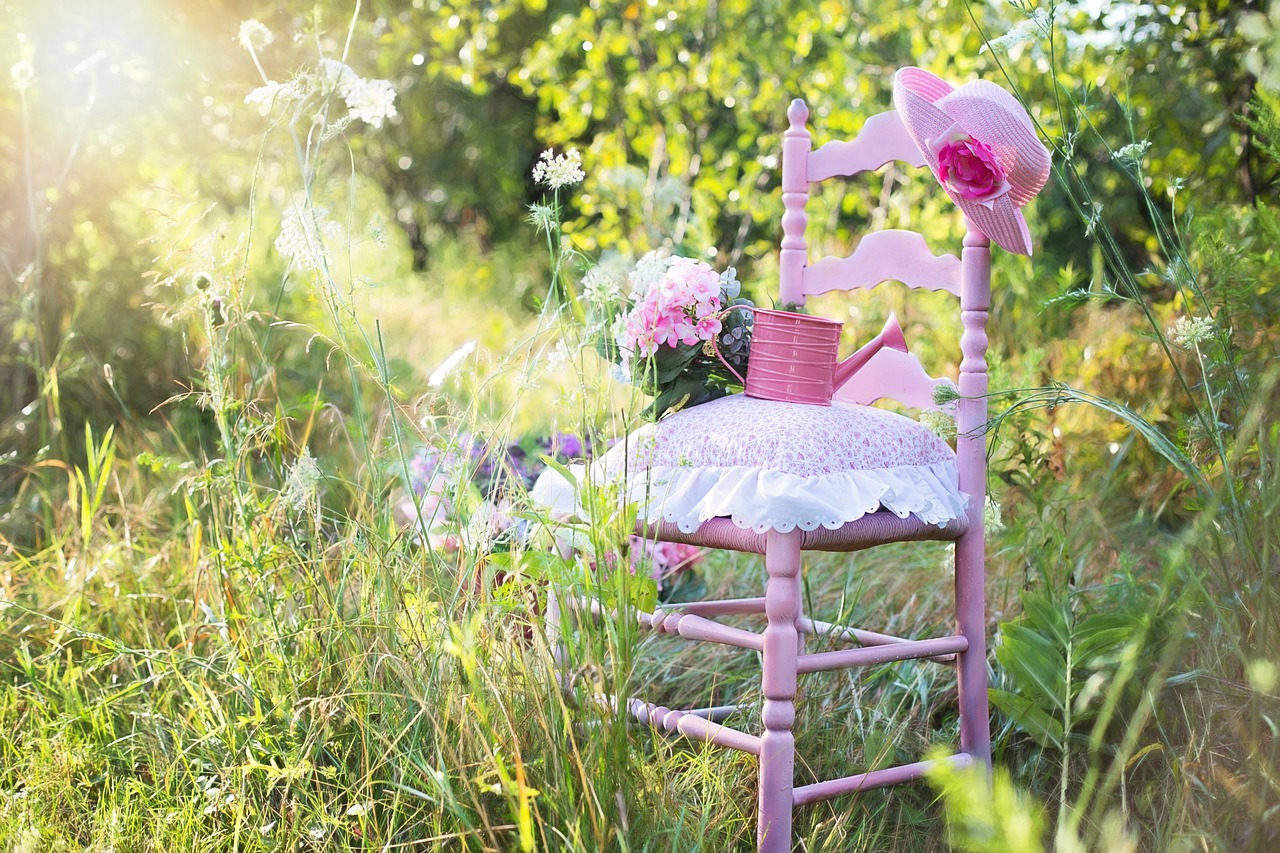
Container Gardening Essentials
Container gardening is a fantastic way to bring greenery into your urban life, especially when space is at a premium. Imagine living in a bustling city, surrounded by concrete, yet having a vibrant garden right outside your window. It’s all possible with the right essentials for container gardening. First and foremost, you’ll want to start with the containers themselves. Choose pots that fit your style and space, but don't forget about functionality. Look for containers with adequate drainage holes to prevent water from pooling and causing root rot. Terracotta pots are a popular choice due to their breathability, but plastic and ceramic pots can also work well.
Next up, the soil you use is crucial. Regular garden soil isn’t suitable for containers as it can compact and restrict root growth. Instead, opt for a high-quality potting mix that retains moisture while allowing for good drainage. You might even want to create your own mix by combining peat moss, vermiculite, and compost to ensure your plants get the nutrients they need. Remember, healthy soil leads to healthy plants!
When it comes to plant selection, think about the amount of sunlight your containers will receive. Most vegetables and flowering plants thrive in full sun, so choose varieties that match your light conditions. For instance, if your balcony only gets partial shade, consider shade-tolerant plants like ferns or hostas. On the other hand, if you have a sunny spot, tomatoes, peppers, and herbs like basil will flourish.
Watering is another essential aspect of container gardening. Since containers dry out faster than garden beds, you need to monitor moisture levels closely. A good rule of thumb is to check your plants daily, especially during hot weather. You might also consider using self-watering containers or adding a layer of mulch to help retain moisture.
Lastly, don’t overlook fertilization. Container plants may require more nutrients than those grown in the ground, so a balanced, slow-release fertilizer can do wonders. Follow the instructions on the package for the best results, and consider organic options to keep your gardening sustainable.
To summarize, here are the essentials for successful container gardening:
- Containers: Choose pots with drainage holes.
- Soil: Use a high-quality potting mix.
- Plant Selection: Match plants to your light conditions.
- Watering: Monitor moisture closely and consider self-watering options.
- Fertilization: Use a balanced, slow-release fertilizer.
By focusing on these key essentials, you can transform any small space into a lush, thriving garden. So, grab your pots, pick your plants, and let's get growing!
Q: What types of plants are best for container gardening?
A: Choose plants that thrive in containers, such as herbs, vegetables, and flowers. Consider your sunlight conditions when selecting plants.
Q: How often should I water my container plants?
A: Container plants typically need daily watering, especially in hot weather. Check the soil moisture regularly to avoid over or under-watering.
Q: Can I use regular garden soil in my containers?
A: No, regular garden soil can compact in containers. Use a high-quality potting mix designed for container gardening.
Q: How can I prevent my container plants from drying out?
A: Use self-watering containers, add mulch to retain moisture, and choose drought-resistant plants when possible.

Composting in the City
Composting in urban environments is not just a trend; it's a transformative practice that can significantly reduce waste while enriching the soil in your garden. In bustling cities, where space is often limited and waste is abundant, composting offers a practical solution to both problems. By turning kitchen scraps and yard waste into nutrient-rich compost, city dwellers can contribute to a more sustainable ecosystem. Imagine transforming your banana peels and coffee grounds into black gold that nourishes your plants—how cool is that?
Many people might think that composting is only for those with sprawling backyards, but that's far from the truth! Even if you live in a small apartment, there are various methods you can adopt to compost effectively. For instance, using a simple compost bin on your balcony or even vermicomposting with worms can make it feasible. The key is to find a method that works for your living situation and stick with it. The beauty of composting lies in its adaptability, allowing you to cultivate your green thumb right in the heart of the city.
Moreover, composting can significantly reduce the amount of waste that ends up in landfills. Did you know that food scraps and yard waste make up nearly 30% of what we throw away? By composting, you not only decrease landfill contributions but also cut down on greenhouse gas emissions produced when organic waste decomposes anaerobically in landfills. It’s a win-win situation for both you and the environment!
To get started with composting, consider the following methods:
- Traditional Composting: This involves creating a compost pile in your backyard or a designated area. Layering green materials (like vegetable scraps) and brown materials (like dried leaves) is essential for a balanced compost.
- Vermicomposting: This method uses red worms to break down organic matter. It's perfect for small spaces because it requires minimal room and can be done indoors.
- Bokashi Composting: A fermentation process that allows you to compost in a sealed container. This method is great for kitchen scraps and can handle meats and dairy, which are typically not compostable in traditional methods.
While composting offers numerous benefits, it’s not without its challenges. Urban dwellers may face issues such as limited space, odors, or attracting pests. However, these challenges can be easily overcome with the right strategies. For instance, maintaining a balanced compost mix and regularly turning your pile can help manage odors. Additionally, using sealed bins can deter pests and keep your composting efforts tidy.
In conclusion, composting in the city is an accessible and rewarding practice that benefits both the gardener and the environment. By embracing composting, you can turn your organic waste into a valuable resource, contribute to reducing landfill waste, and create a healthier urban ecosystem. So, why not give it a try? You might just find that composting becomes one of your favorite hobbies!
Q: Can I compost in a small apartment?
A: Absolutely! Methods like vermicomposting or using a compact compost bin are excellent for small spaces.
Q: What materials can I compost?
A: You can compost fruit and vegetable scraps, coffee grounds, eggshells, and yard waste. Just avoid meat, dairy, and oily foods in traditional composting.
Q: How long does it take for compost to be ready?
A: Depending on the method and conditions, compost can take anywhere from a few weeks to several months to fully decompose.
Q: What do I do if my compost smells bad?
A: Bad odors usually indicate an imbalance in your compost. Ensure you have a good mix of greens and browns and turn the pile regularly to aerate it.

Types of Composting
Composting is a fantastic way to reduce waste while enriching your garden soil, and it can be tailored to fit urban living. In city environments, where space is often at a premium, choosing the right composting method is essential. There are several types of composting that are particularly suitable for urban dwellers, each with its unique benefits and requirements.
One popular method is vermicomposting, which uses worms to break down organic matter. This method is perfect for small spaces, as it can be done in a compact bin. The worms not only help decompose food scraps but also produce nutrient-rich worm castings, which can be used as an excellent fertilizer for your plants. It's a bit like having your own little ecosystem right in your apartment!
Another effective method is bokashi composting. This technique involves fermenting kitchen waste using a special mix of microorganisms. The bokashi method is particularly appealing for city dwellers because it can handle a wider variety of waste, including meat and dairy, which are typically not suitable for traditional composting. After fermentation, the waste is buried in the soil, where it continues to break down and enriches the earth. This process is quick, efficient, and minimizes odors, making it ideal for urban settings.
For those who have a little more outdoor space, traditional compost bins can still be an option. These bins allow for larger quantities of organic waste to decompose over time. The key here is to ensure proper aeration and balance between green materials (like vegetable scraps) and brown materials (like dried leaves). It's a bit like cooking; you have to find the right proportions to get a delicious result!
Here’s a quick overview of the different types of composting and their suitability for urban environments:
| Type of Composting | Space Required | Best For |
|---|---|---|
| Vermicomposting | Very Small | Kitchen scraps and small waste |
| Bokashi Composting | Small | All organic waste, including meat and dairy |
| Traditional Composting | Moderate | Larger quantities of organic waste |
Each of these methods has its unique charm and practicality, making it easier for city dwellers to adopt sustainable practices. The best choice for you will depend on your available space, the types of waste you produce, and your gardening goals. By selecting the right composting method, you can contribute to a greener city and enjoy the benefits of rich, healthy soil.
Q: Can I compost meat and dairy in traditional compost bins?
A: Generally, it's not recommended to compost meat and dairy in traditional compost bins due to the potential for odors and attracting pests. However, bokashi composting allows for these materials.
Q: How often should I turn my compost?
A: It's a good idea to turn your compost every few weeks to aerate it and speed up the decomposition process. This helps create a balanced environment for the microorganisms breaking down the materials.
Q: What should I do if my compost smells bad?
A: A bad smell usually indicates that there is too much green material (nitrogen-rich) or that the compost is too wet. Try adding more brown materials (carbon-rich) and turning the compost to aerate it.
Q: Can I compost in an apartment?
A: Absolutely! Methods like vermicomposting and bokashi composting are perfect for apartment living as they require minimal space and can effectively handle kitchen waste.
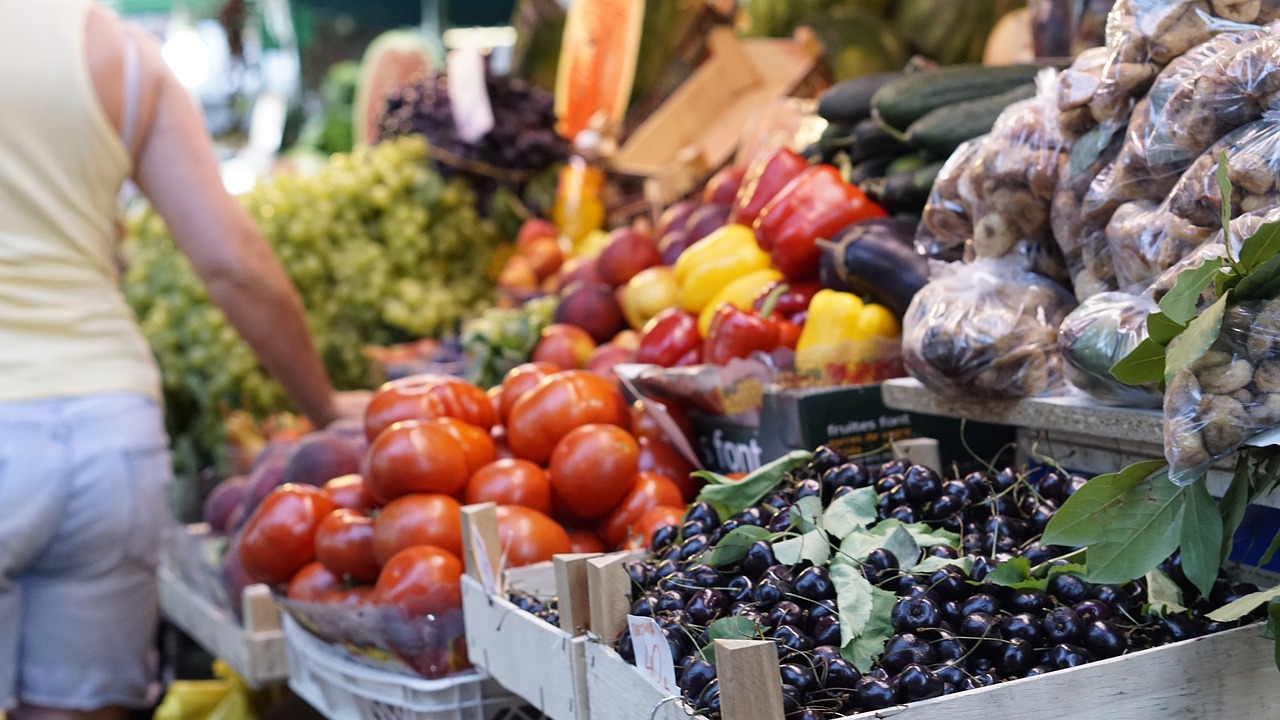
Composting Challenges
Composting in urban settings can be a rewarding yet challenging endeavor. City dwellers often face unique hurdles that can make the composting process seem daunting. One of the most common challenges is space constraints. Many apartments and homes in cities lack the outdoor space required for traditional compost bins. However, with some creativity and resourcefulness, even those living in cramped quarters can find ways to compost effectively.
Another significant challenge is managing the balance of materials. Composting requires a careful mix of 'greens' (nitrogen-rich materials like food scraps) and 'browns' (carbon-rich materials like dried leaves). In urban environments, residents may struggle to source enough browns, leading to a compost pile that becomes too wet and smelly. To combat this, urban gardeners can consider collecting dried leaves during fall or using shredded cardboard as a brown material.
Additionally, pests can pose a serious threat to composting efforts in cities. Rats and other critters are often attracted to compost piles, especially when food scraps are not properly managed. To minimize this risk, it's essential to use a sealed compost bin or a worm composting system, which can deter pests while providing nutrient-rich compost for your plants.
Lastly, odor control is another common concern for urban composters. If not managed correctly, compost bins can emit unpleasant smells that may disturb neighbors. To avoid this, it’s crucial to monitor the moisture level of the compost and ensure proper aeration by turning the pile regularly. Adding materials like sawdust or shredded newspaper can also help absorb excess moisture and reduce odors.
Despite these challenges, the benefits of composting far outweigh the obstacles. With a little patience and the right strategies, anyone can turn their kitchen scraps into valuable compost, enriching their urban garden and contributing to a more sustainable city environment.
- What can I compost in an urban setting? Most kitchen scraps, yard waste, and certain paper products can be composted. Avoid meat, dairy, and oils as they can attract pests.
- How do I start composting in a small apartment? Consider using a worm bin or a bokashi system, which are both compact and effective for indoor composting.
- Can I compost during winter? Yes, composting can continue in winter, but the process may slow down. Insulating your compost bin can help maintain heat.
- What should I do if my compost smells bad? If your compost is odorous, it may be too wet or lacking in aeration. Add dry materials and turn the pile to improve airflow.
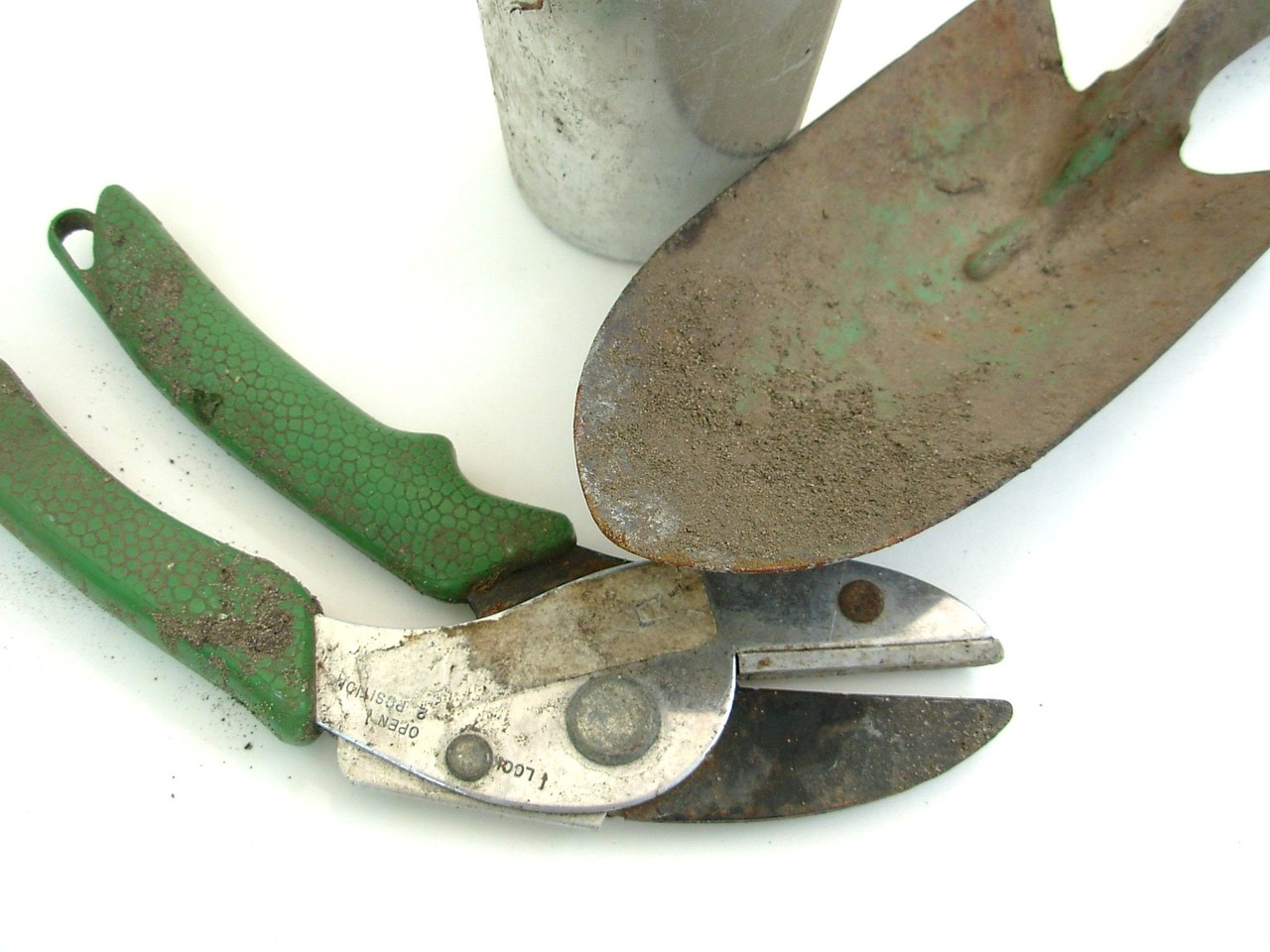
Community Gardening Initiatives
Community gardens are not just patches of green in concrete jungles; they are vibrant hubs of collaboration, sustainability, and connection. These gardens bring together individuals from diverse backgrounds, allowing them to cultivate not only plants but also friendships and a sense of belonging. Imagine stepping into a garden where neighbors gather to share fresh produce, gardening tips, and laughter. It's more than just gardening; it's about building a community.
Getting involved in community gardening initiatives can significantly enhance urban living. They provide a platform for local residents to express their creativity, learn about sustainable practices, and contribute to the beautification of their neighborhoods. Plus, community gardens often address food security by providing fresh fruits and vegetables to those who may have limited access to grocery stores. It's a win-win situation!
To get started with community gardening, you might want to consider a few essential steps:
- Research Local Initiatives: Look for existing community gardens in your area. Many cities have networks or organizations that promote community gardening.
- Connect with Your Neighbors: Talk to your neighbors and gauge interest in starting a garden together. Collaboration is key!
- Identify a Suitable Location: Find a piece of land that can be transformed into a garden. This could be a vacant lot, a park, or even a rooftop.
- Plan and Design: Work together to design the layout of the garden, deciding what types of plants to grow and how to organize the space.
Moreover, community gardens can also serve as educational platforms. Workshops and events can be organized to teach participants about sustainable gardening techniques, composting, and even cooking classes using the produce grown in the garden. This not only empowers individuals with knowledge but also fosters a deeper appreciation for local food systems.
However, starting a community garden is not without its challenges. Issues such as securing land, obtaining funding, and navigating city regulations can arise. But with determination and collaboration, these obstacles can be overcome. Many successful community gardens have thrived despite initial hurdles, proving that a shared vision and teamwork can lead to flourishing green spaces.
In conclusion, community gardening initiatives are a fantastic way to engage with your urban environment. They promote sustainability, enhance food security, and strengthen community ties. So why not roll up your sleeves, dig into the earth, and plant the seeds for a greener future right in your neighborhood?
Q: What are the benefits of community gardening?
A: Community gardening promotes social interaction, provides access to fresh produce, enhances urban biodiversity, and fosters a sense of community and belonging.
Q: How can I find a community garden near me?
A: You can search online for local gardening organizations or community centers that may have information on existing gardens in your area.
Q: What should I bring to a community gardening event?
A: It's a good idea to bring gardening gloves, tools, water, and snacks to share with fellow gardeners. Also, consider bringing seeds or plants to contribute to the garden!
Q: Can I start a community garden in my neighborhood?
A: Absolutely! Gather interested neighbors, research local regulations, and find a suitable space to start your garden. Collaboration is key!

Benefits of Community Gardening
Community gardening is more than just a trend; it’s a movement that brings people together, cultivates relationships, and fosters a sense of belonging. Imagine stepping into a vibrant green space where neighbors become friends, and everyone shares the fruits of their labor. The benefits of community gardening extend far beyond the physical act of planting seeds; they encompass social, economic, and environmental advantages that can transform urban living.
One of the most significant benefits is the enhancement of food security. Community gardens provide fresh produce to neighborhoods that may lack access to grocery stores or farmers' markets. This not only improves nutrition but also reduces the carbon footprint associated with transporting food over long distances. When you grow your own vegetables, you know exactly what goes into your food, which is a powerful feeling in today’s world.
Moreover, community gardens serve as a hub for social interaction. They create a space where individuals from diverse backgrounds can come together, share knowledge, and learn from one another. Whether it’s teaching a child how to plant a seed or sharing recipes that incorporate fresh vegetables, these interactions build community bonds. It’s like creating a mini ecosystem of support and friendship, where everyone contributes to a common goal.
In addition to social benefits, community gardening also has a positive impact on the environment. Gardens promote biodiversity by providing habitats for various species, including pollinators like bees and butterflies. They also help improve air quality and reduce urban heat, making cities more livable. The act of gardening itself encourages sustainable practices such as composting and organic gardening, which further enhance environmental health.
Financially, community gardens can be a boon for local economies. They can increase property values in neighborhoods and create opportunities for local businesses, such as farmers' markets and artisanal food producers. When communities come together to grow their own food, they often find ways to turn surplus produce into profits, whether through selling at markets or hosting community events.
To sum it up, the benefits of community gardening can be summarized as follows:
- Food Security: Access to fresh produce.
- Social Interaction: Building friendships and community ties.
- Environmental Impact: Promoting biodiversity and sustainability.
- Economic Growth: Supporting local businesses and increasing property values.
In essence, community gardening is a powerful tool for urban transformation. It not only greets you with the beauty of blooming flowers and lush vegetables but also offers a way to connect, nurture, and grow together. So, if you’re considering getting involved, remember that every seed planted is a step towards a healthier community!
Q: How can I find a community garden in my area?
A: You can search online for local community gardening organizations or check with local parks and recreation departments. Many cities have websites listing available community gardens.
Q: Do I need gardening experience to join a community garden?
A: Not at all! Community gardens welcome gardeners of all skill levels. Many offer workshops and guidance to help you get started.
Q: What can I grow in a community garden?
A: Depending on the garden's guidelines, you can typically grow a variety of vegetables, herbs, and flowers. It's best to check with the community garden coordinator for specific recommendations.
Q: Are there any costs associated with joining a community garden?
A: Some community gardens may charge a small fee for a plot, while others may be free. It's important to inquire about any costs when you reach out to the garden organizers.
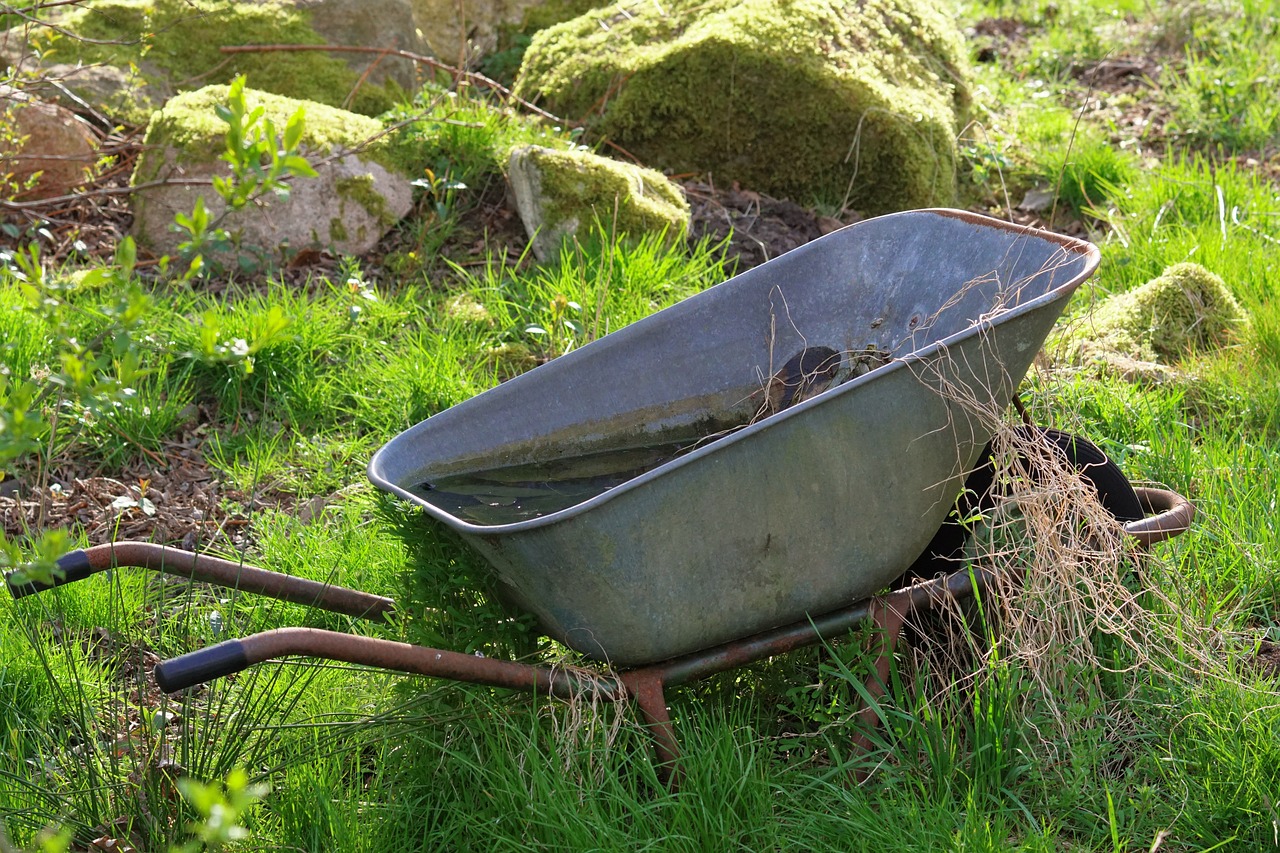
Starting a Community Garden
Starting a community garden is like planting a seed of collaboration in your neighborhood. It begins with a vision—a shared dream of transforming an empty lot or underutilized space into a vibrant green haven where people can come together to grow food, share knowledge, and foster relationships. But how do you turn this vision into reality? The process involves several key steps that ensure your garden not only flourishes but also becomes a cornerstone of community engagement.
First, gather a group of enthusiastic neighbors who share your passion for gardening. This group will be essential in bringing diverse skills, ideas, and resources to the table. Once you have a team, it’s time to identify a suitable location for your garden. Look for vacant lots, parks, or even school yards that may be available for community use. It's crucial to check with local authorities to understand zoning laws and obtain any necessary permissions.
Next, consider what you want to grow. This decision can depend on the interests of your group and the local climate. You might choose to plant vegetables, herbs, or flowers, but it’s also a good idea to incorporate native plants that attract pollinators and support local wildlife. Engaging the community in this decision can foster a sense of ownership and pride in the garden.
Once the location and plant choices are established, it’s time to plan the layout of the garden. Consider factors like sunlight, soil quality, and accessibility. You might want to create designated plots for individual gardeners or communal spaces for shared crops. Drawing a simple plan can help visualize the space and ensure efficient use of resources.
Now comes the exciting part—getting your hands dirty! Organize a community workday to prepare the soil, build raised beds, or set up irrigation systems. This is a fantastic opportunity for bonding and teamwork. As you dig, plant, and nurture your garden, remember to document the process. Photos and stories can help inspire others to join in or start their own gardens.
Finally, establish a maintenance plan to keep the garden thriving. This could involve regular watering schedules, weeding days, and seasonal planting events. Encourage community members to take turns caring for the garden, which not only helps with upkeep but also strengthens the community spirit. Consider hosting workshops or events to educate participants on sustainable gardening practices, composting, and pest management.
Incorporating a community garden into your urban landscape can be a rewarding experience that yields not just fresh produce but also lasting friendships and a sense of belonging. So, grab your gloves, gather your neighbors, and start planting the seeds of community together!
- What is a community garden? A community garden is a shared space where individuals come together to grow plants, vegetables, and flowers, promoting cooperation and sustainability.
- How do I find a location for a community garden? Look for vacant lots, parks, or school yards and consult local authorities to understand zoning laws and permissions.
- What can we grow in a community garden? You can grow vegetables, herbs, flowers, and native plants that support local wildlife.
- How do we maintain the garden? Establish a maintenance plan with scheduled workdays, watering schedules, and educational workshops to keep everyone engaged.

Water Conservation Techniques
Water conservation is a critical aspect of sustainable gardening, especially in urban environments where water resources can be limited. With the increasing pressures of climate change and urbanization, it's essential to adopt effective water management techniques that not only help in maintaining your garden but also contribute to the overall health of the environment. By implementing strategic practices, you can significantly reduce water usage while ensuring your plants thrive.
One of the most effective ways to conserve water in your garden is through rainwater harvesting. This technique involves collecting and storing rainwater from rooftops or other surfaces, which can then be used for irrigation. Setting up a rainwater harvesting system is relatively simple and can be tailored to fit the size of your garden. For instance, you can use barrels or cisterns to collect rainwater, which can be easily accessed for watering your plants during dry spells.
Another excellent method for conserving water is drip irrigation. Unlike traditional watering methods that can waste a significant amount of water, drip irrigation delivers moisture directly to the roots of your plants. This targeted approach not only minimizes evaporation and runoff but also ensures that your plants receive the right amount of water they need to flourish. You can set up a drip irrigation system using a network of tubing and emitters, making it a perfect solution for urban gardens where water efficiency is paramount.
To give you a clearer idea of how much water can be saved with these techniques, consider the following table that compares traditional watering methods with rainwater harvesting and drip irrigation:
| Watering Method | Water Usage (per month) | Water Savings |
|---|---|---|
| Traditional Sprinkler System | 400 gallons | N/A |
| Rainwater Harvesting | 200 gallons | 50% |
| Drip Irrigation | 150 gallons | 62.5% |
As you can see, both rainwater harvesting and drip irrigation can lead to substantial water savings. However, it's essential to consider the unique conditions of your urban garden when choosing the best method. Factors such as the size of your garden, the type of plants you are growing, and the typical weather patterns in your area can all influence your decision.
In addition to these techniques, incorporating mulching into your gardening routine can also help retain moisture in the soil. By covering the soil with organic materials like straw, wood chips, or grass clippings, you create a barrier that reduces evaporation and keeps the soil temperature stable. This simple yet effective practice can lead to healthier plants and less frequent watering.
Ultimately, the key to successful water conservation in urban gardening lies in being mindful of your water usage and making informed choices. By adopting these techniques, you not only contribute to the sustainability of your environment but also create a lush, thriving garden that can withstand the challenges of city life.
- What is rainwater harvesting? Rainwater harvesting is the process of collecting and storing rainwater for later use, particularly for irrigation.
- How does drip irrigation work? Drip irrigation uses a network of tubes and emitters to deliver water directly to the roots of plants, minimizing waste.
- Can I use rainwater for all my gardening needs? Yes, rainwater is suitable for most gardening needs, but it's essential to ensure that it is collected and stored properly to avoid contamination.
- What types of mulch are best for water conservation? Organic mulches like straw, wood chips, and shredded leaves are excellent for retaining soil moisture.
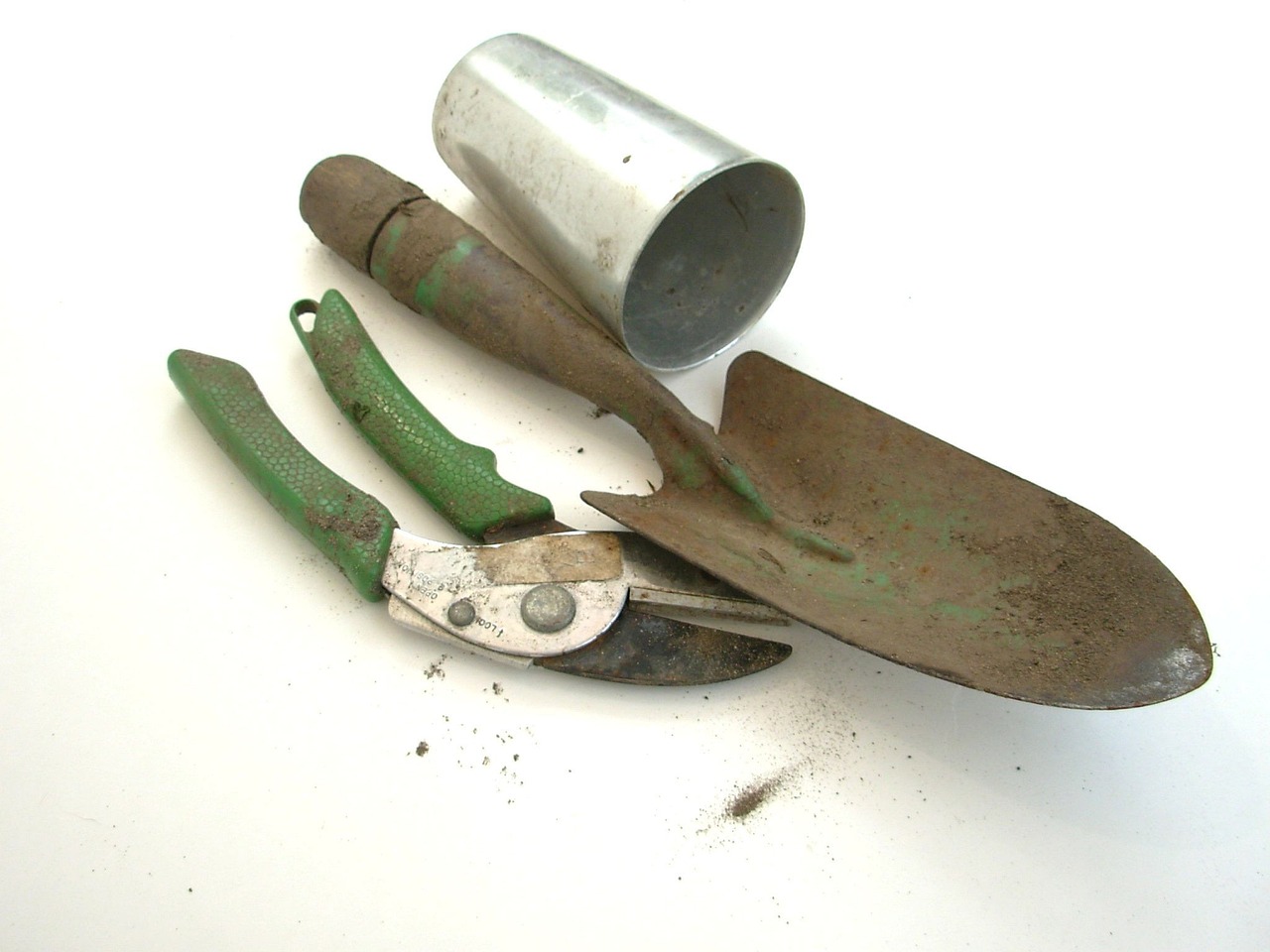
Rainwater Harvesting Systems
Rainwater harvesting systems are an ingenious way to make the most of our natural resources, especially in urban environments where every drop counts. Imagine being able to capture the rain that falls on your roof and use it to water your garden or even flush your toilets! This method not only conserves water but also reduces your water bill, making it a win-win for both your wallet and the planet.
Setting up a rainwater harvesting system can be as simple or as complex as you want it to be. At its core, it involves collecting rainwater from rooftops, which is then directed into storage containers. These containers can range from large barrels to sophisticated underground tanks, depending on your space and budget. The basic components of a rainwater harvesting system include:
- Catchment Area: This is typically your roof, where rainwater is collected.
- Conveyance System: Gutters and downspouts guide the water from the roof to the storage container.
- Storage Container: This can be a rain barrel or a larger tank where the water is stored until needed.
- Filtration System: To ensure that the water is clean and safe for use, a filtration system may be necessary, especially if you plan to use the water for drinking.
To give you an idea of how effective these systems can be, let’s look at a simple example:
| Rainfall (inches) | Roof Area (sq ft) | Potential Water Harvested (gallons) |
|---|---|---|
| 1 | 1000 | 623 |
| 2 | 1000 | 1246 |
| 3 | 1000 | 1869 |
As you can see, even a modest roof can yield significant amounts of water over time. However, it's important to consider local regulations regarding rainwater harvesting, as some areas have specific guidelines in place. Additionally, maintaining your system is crucial; regular cleaning of gutters and filters will ensure that your harvested rainwater remains clean and usable.
Incorporating a rainwater harvesting system into your urban garden not only promotes sustainability but also fosters a deeper connection with nature. It encourages mindfulness about water usage and can be a fun project for families to undertake together. So, why not take the plunge and start capturing that precious rainwater? Your garden—and your community—will thank you for it!
1. Is rainwater safe to drink?
While rainwater can be collected and used for irrigation, it’s essential to filter and purify it if you plan to drink it. Always check local regulations regarding the use of rainwater for potable purposes.
2. How much rainwater can I collect?
The amount of rainwater you can collect depends on the size of your roof and the average rainfall in your area. A standard rule of thumb is that one inch of rain on a 1,000 square foot roof can yield about 623 gallons of water.
3. How do I maintain my rainwater harvesting system?
Regular maintenance includes cleaning gutters, checking for debris in the storage tank, and ensuring that filters are functioning correctly. This helps keep the water clean and makes the system more efficient.
4. Can I use rainwater for my vegetable garden?
Absolutely! Rainwater is often better for plants than tap water, as it is typically free of chlorine and other chemicals. Just ensure that your collection system is clean and well-maintained.
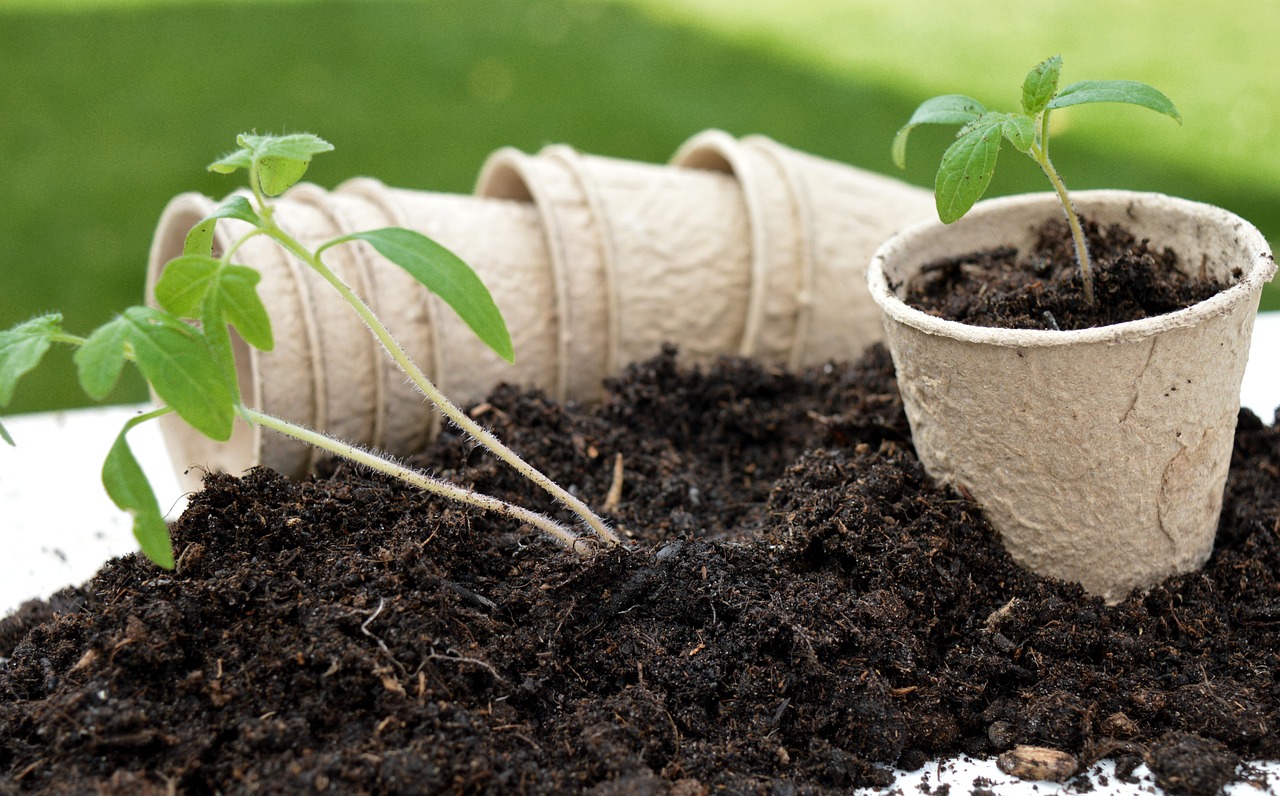
Drip Irrigation Benefits
Drip irrigation is a game-changer for urban gardeners looking to maximize water efficiency while nurturing their green spaces. This method involves delivering water directly to the roots of plants through a network of tubing and emitters, ensuring that every drop counts. One of the most significant advantages of drip irrigation is its ability to reduce water waste significantly. Unlike traditional methods that can lead to evaporation or runoff, drip systems provide a slow and steady supply of moisture, keeping the soil consistently damp without saturating it.
Moreover, drip irrigation promotes healthier plant growth. By targeting the roots, plants receive the precise amount of water they need, which can lead to stronger root systems and improved overall health. This targeted approach not only enhances growth but also minimizes the risk of diseases that can arise from overly wet foliage. In urban settings, where space is often limited, this efficiency becomes even more crucial, allowing gardeners to cultivate thriving plants without excessive resource consumption.
Another noteworthy benefit is the reduction in labor and maintenance. With drip irrigation systems, gardeners spend less time watering and more time enjoying their gardens. Once set up, these systems can be automated with timers, making it easy to maintain optimal watering schedules even when life gets busy. This convenience is particularly appealing to city dwellers who may have hectic lifestyles but still wish to engage in gardening.
To illustrate the effectiveness of drip irrigation, consider the following comparison:
| Watering Method | Water Usage | Plant Health | Labor Intensity |
|---|---|---|---|
| Traditional Sprinkler | High | Variable | High |
| Drip Irrigation | Low | Consistent | Low |
In addition to these benefits, drip irrigation also supports sustainable gardening practices by reducing the need for chemical fertilizers. When water is delivered directly to the roots, it encourages plants to absorb nutrients more efficiently. This means less runoff into the surrounding environment, which can lead to pollution of local waterways. By choosing drip irrigation, urban gardeners can contribute to a healthier ecosystem while still enjoying the beauty and bounty of their gardens.
In summary, the benefits of drip irrigation in urban gardening are multifaceted. From conserving water and promoting plant health to reducing labor and supporting sustainability, it’s clear that this method is an excellent choice for city dwellers looking to cultivate their green spaces responsibly. So, if you’re ready to take your urban gardening to the next level, consider investing in a drip irrigation system—it might just be the secret ingredient to your garden’s success!
Q: What is drip irrigation?
A: Drip irrigation is a method of watering plants by delivering water directly to their roots through a system of tubing and emitters, which minimizes water waste and promotes healthy growth.
Q: How does drip irrigation save water?
A: By providing a slow and steady supply of water directly to the soil, drip irrigation reduces evaporation and runoff, ensuring that more water reaches the plants.
Q: Can I install a drip irrigation system myself?
A: Yes! Many drip irrigation systems are designed for easy DIY installation, and there are plenty of resources available to help you set it up.
Q: Is drip irrigation suitable for all types of plants?
A: While drip irrigation is highly versatile, it is particularly beneficial for plants that prefer consistent moisture levels, such as vegetables, herbs, and flowering plants.

Engaging with Local Resources
When it comes to sustainable gardening in urban environments, tapping into local resources can significantly enhance your efforts. Think of your community as a treasure trove of knowledge and support, just waiting to be explored. Local organizations, workshops, and online platforms can provide invaluable assistance, making your gardening journey not only more productive but also more enjoyable.
First, let’s talk about community organizations. Many cities have non-profits or local gardening clubs dedicated to promoting sustainable practices. These groups often host events, offer resources, and even provide grants for urban gardening projects. By engaging with these organizations, you can connect with like-minded individuals who share your passion for green living. They can offer advice tailored to your specific climate and urban challenges, ensuring that your gardening efforts are both effective and sustainable.
Additionally, participating in local gardening workshops can be a game-changer. These workshops typically cover a range of topics, from soil health to pest management, and are often led by experienced gardeners or horticulturists. Not only do these sessions provide hands-on experience, but they also create opportunities for networking with fellow gardeners. You might just find a mentor or a gardening buddy who can share tips and tricks that make a big difference in your urban garden.
But what if you prefer to learn from the comfort of your home? That’s where online gardening communities come into play. Platforms like social media groups or dedicated gardening forums allow you to connect with urban gardeners from around the world. You can share your challenges, ask for advice, and even showcase your successes. Engaging with these communities can inspire you and provide fresh ideas that you might not encounter in your local environment.
To help you get started, here’s a quick overview of some valuable local resources you might want to explore:
| Resource Type | Description | Examples |
|---|---|---|
| Community Organizations | Groups that promote sustainable gardening practices and provide resources. | Local gardening clubs, non-profits |
| Workshops | Hands-on sessions teaching various gardening skills. | Local botanical gardens, community centers |
| Online Communities | Platforms for sharing tips, experiences, and advice. | Facebook groups, gardening forums |
In summary, engaging with local resources is essential for anyone looking to incorporate sustainable gardening into their urban lifestyle. By leveraging community organizations, participating in workshops, and connecting with online platforms, you can enrich your gardening experience and cultivate a thriving green space right in the heart of the city. So, why not dive in and see what your local gardening community has to offer? You might be surprised at the support and inspiration waiting just around the corner!
- What are the benefits of joining a local gardening club? Joining a local gardening club provides access to resources, knowledge sharing, and social connections with fellow gardeners.
- How can I find workshops in my area? Check local community centers, botanical gardens, or online platforms like Eventbrite for upcoming gardening workshops.
- Are online gardening communities effective? Yes! Online communities offer a wealth of knowledge and support from gardeners worldwide, making them a great resource for tips and inspiration.
- What should I look for in a community organization? Look for organizations that align with your gardening goals, offer educational resources, and provide opportunities for community involvement.

Local Gardening Workshops
Participating in is a fantastic way to enhance your sustainable gardening skills while connecting with like-minded individuals in your community. These workshops often cover a variety of topics, from the basics of organic gardening to advanced techniques like permaculture and aquaponics. Imagine learning how to grow your own food right in the heart of the city, all while having fun and making new friends!
Many workshops are organized by local community centers, botanical gardens, or even universities. They usually feature experienced gardeners and environmentalists who share their knowledge and passion. You might find yourself digging into the soil, planting seeds, or even creating your compost right there in the workshop! This hands-on experience is invaluable, as it allows you to learn by doing, which is often the best way to grasp new concepts.
To give you an idea of what to expect, here’s a quick overview of some common topics covered in these workshops:
- Soil Health: Learn about the importance of soil composition and how to amend it for optimal plant growth.
- Plant Selection: Discover which plants thrive in your local climate and how to choose the right ones for your garden.
- Composting Techniques: Get hands-on experience in setting up a compost system that works for your space.
- Pest Management: Understand natural pest control methods that promote a healthy ecosystem.
Finding these workshops is easier than you might think. A quick search on social media platforms or community bulletin boards will often lead you to upcoming events. Additionally, many local gardening clubs host regular sessions that cater to both beginners and seasoned gardeners. You can also check websites of local botanical gardens or agricultural extensions, as they frequently offer workshops tailored to urban gardening.
In summary, local gardening workshops are not just educational; they are a way to cultivate a sense of community while nurturing your green thumb. So, why not take a leap and sign up for one? You might just find your new favorite hobby, along with a bunch of new friends who share your passion for sustainable gardening!
Q: How do I find local gardening workshops?
A: You can find local gardening workshops by checking community centers, botanical gardens, and social media groups dedicated to gardening. Websites of local agricultural extensions often list upcoming events as well.
Q: Are these workshops suitable for beginners?
A: Absolutely! Most workshops cater to all skill levels, and many are specifically designed for beginners. Don't hesitate to ask questions and seek guidance!
Q: What should I bring to a gardening workshop?
A: It's a good idea to bring gloves, a notebook for taking notes, and any personal gardening tools you might want to use. Some workshops may provide materials, but checking in advance is always wise.

Online Gardening Communities
In today's digital age, serve as a vibrant hub for urban gardeners seeking knowledge, inspiration, and support. These platforms connect individuals from diverse backgrounds, allowing them to share their experiences, tips, and even challenges faced in their gardening journeys. Imagine having a space where you can ask questions, get advice, and celebrate your gardening successes with like-minded individuals—this is the essence of online gardening communities.
One of the most significant advantages of these communities is the wealth of information available at your fingertips. Whether you're a seasoned gardener or just starting, you'll find forums, blogs, and social media groups dedicated to various aspects of gardening. From sustainable practices to pest control, the collective knowledge shared can help you navigate the complexities of urban gardening with ease.
Moreover, online communities often host virtual workshops and webinars, providing opportunities to learn directly from experts. These sessions can cover a wide range of topics, including:
- Organic gardening techniques
- Soil health and composting
- Pest management strategies
- Seasonal planting guides
Engaging with these communities not only enhances your gardening skills but also fosters a sense of belonging. You can share your garden photos, seek feedback, and even participate in challenges that encourage creativity and innovation. Many platforms also feature local gardening events, making it easier to connect with fellow gardeners in your area.
If you're interested in joining an online gardening community, consider starting with popular platforms like Facebook, Reddit, and specialized gardening forums. Each platform has its unique vibe, so take some time to explore and find the one that resonates with you. Remember, the goal is to cultivate not just your garden but also relationships with others who share your passion for sustainable gardening.
Q: How can I find local gardening communities online?
A: You can search for local gardening groups on social media platforms like Facebook or join community forums specific to your region. Websites like Meetup.com also list gardening events and groups based on your location.
Q: What are some benefits of joining online gardening communities?
A: Online gardening communities provide access to a wealth of knowledge, networking opportunities, and support from fellow gardeners. They can help you troubleshoot issues, learn new techniques, and stay motivated in your gardening journey.
Q: Are there any costs associated with joining these communities?
A: Most online gardening communities are free to join. However, some specialized workshops or courses may require a fee. Always check the details before signing up.
Q: Can I participate in gardening challenges online?
A: Yes! Many online communities host gardening challenges that encourage members to share their progress, ideas, and results. Participating in these challenges can be a fun way to engage and learn from others.
Frequently Asked Questions
- What is sustainable gardening?
Sustainable gardening refers to practices that are environmentally friendly and promote biodiversity. It focuses on conserving resources and creating healthy ecosystems, which is especially important in urban settings where green spaces are limited.
- How do I choose the right plants for my urban garden?
When selecting plants, opt for native and drought-resistant species that thrive in your local climate. These plants require less water and maintenance, making them ideal for city gardens where resources may be scarce.
- What are the benefits of native plants?
Native plants support local wildlife, require less water, and are easier to care for. By incorporating them into your garden, you contribute to the local ecosystem and help maintain biodiversity in urban areas.
- How can I maximize small gardening spaces?
You can maximize small spaces by using vertical gardening techniques or container gardening. Vertical gardening allows you to grow plants upwards, while container gardening lets you utilize patios, balconies, or even windowsills effectively.
- What are some composting methods suitable for city dwellers?
Urban gardeners can use methods like vermicomposting, which involves worms to break down organic waste, or bokashi, a fermentation process. Both methods are compact and can be done in small spaces, making them perfect for apartments.
- How can I get involved in community gardening?
To get involved in community gardening, look for local initiatives or organizations that promote such projects. You can join existing gardens or even start one by collaborating with neighbors and local groups to create a green space together.
- What techniques can I use for water conservation in my garden?
Effective water conservation techniques include rainwater harvesting systems, which collect rainwater for irrigation, and drip irrigation, which delivers water directly to the roots of plants, minimizing waste.
- Are there local resources available for urban gardeners?
Yes, many communities offer local gardening workshops that provide hands-on experience and education. Additionally, online gardening communities can connect you with other urban gardeners for sharing tips and resources.



















